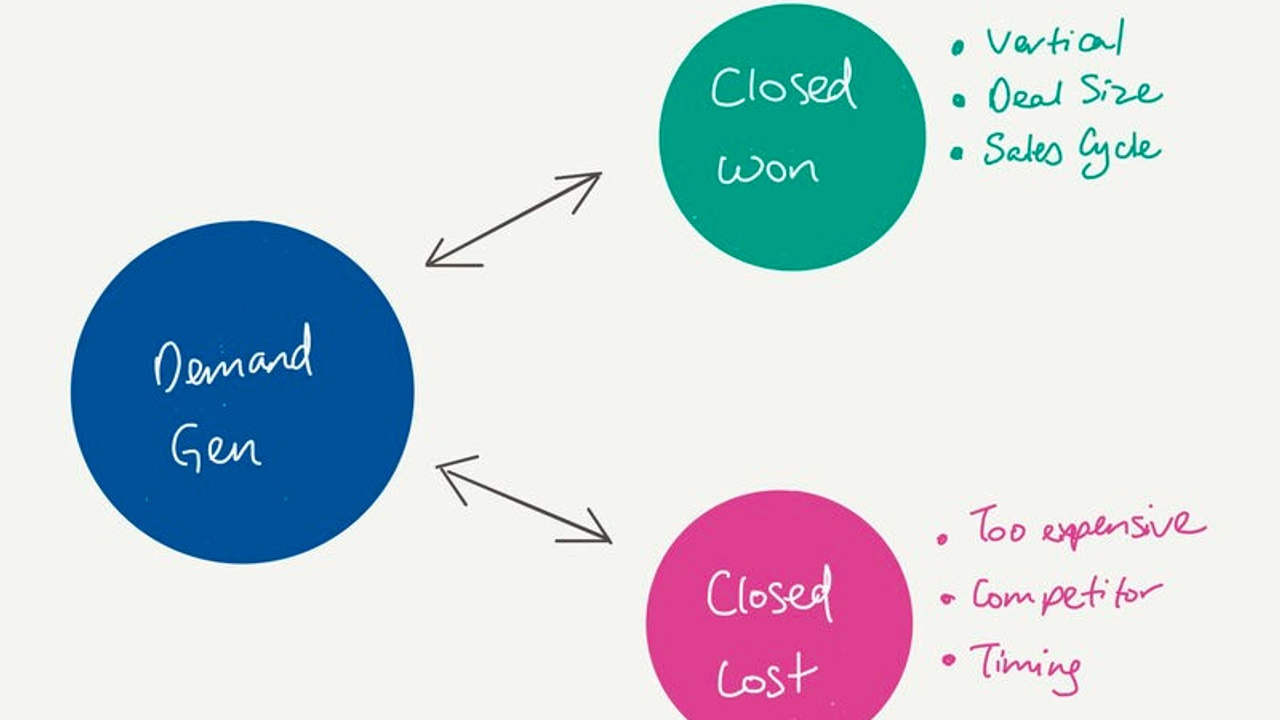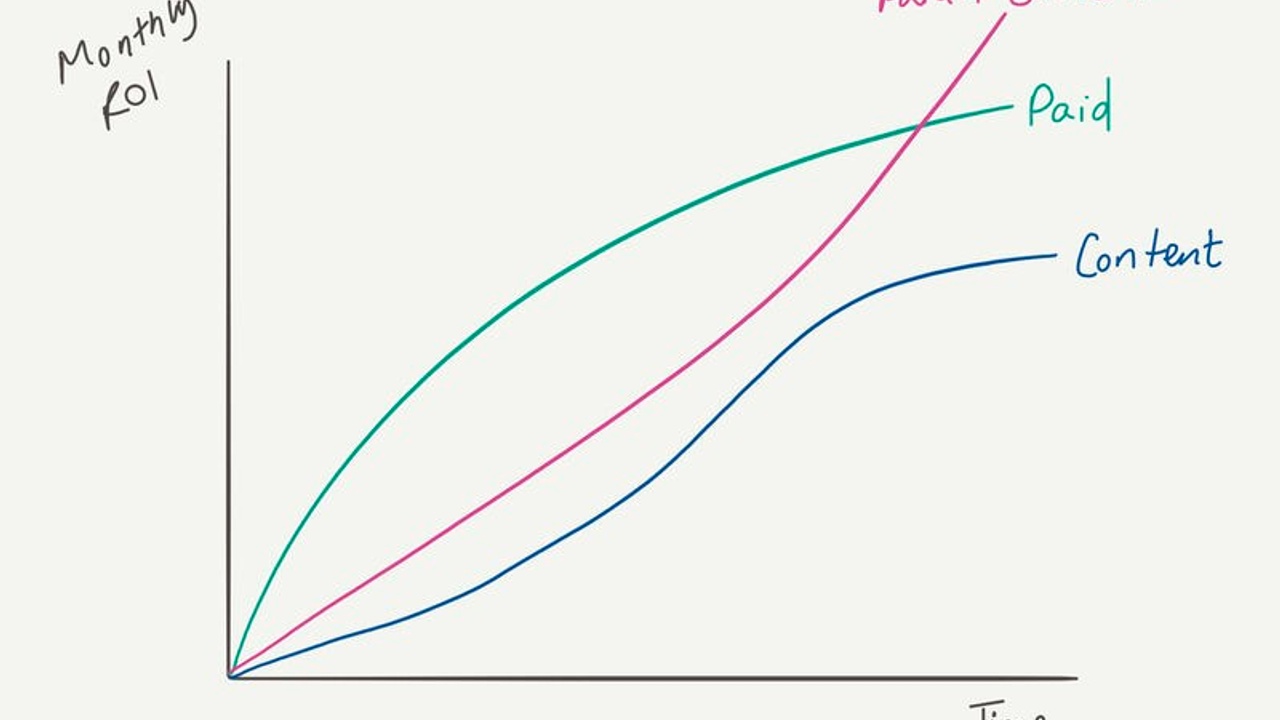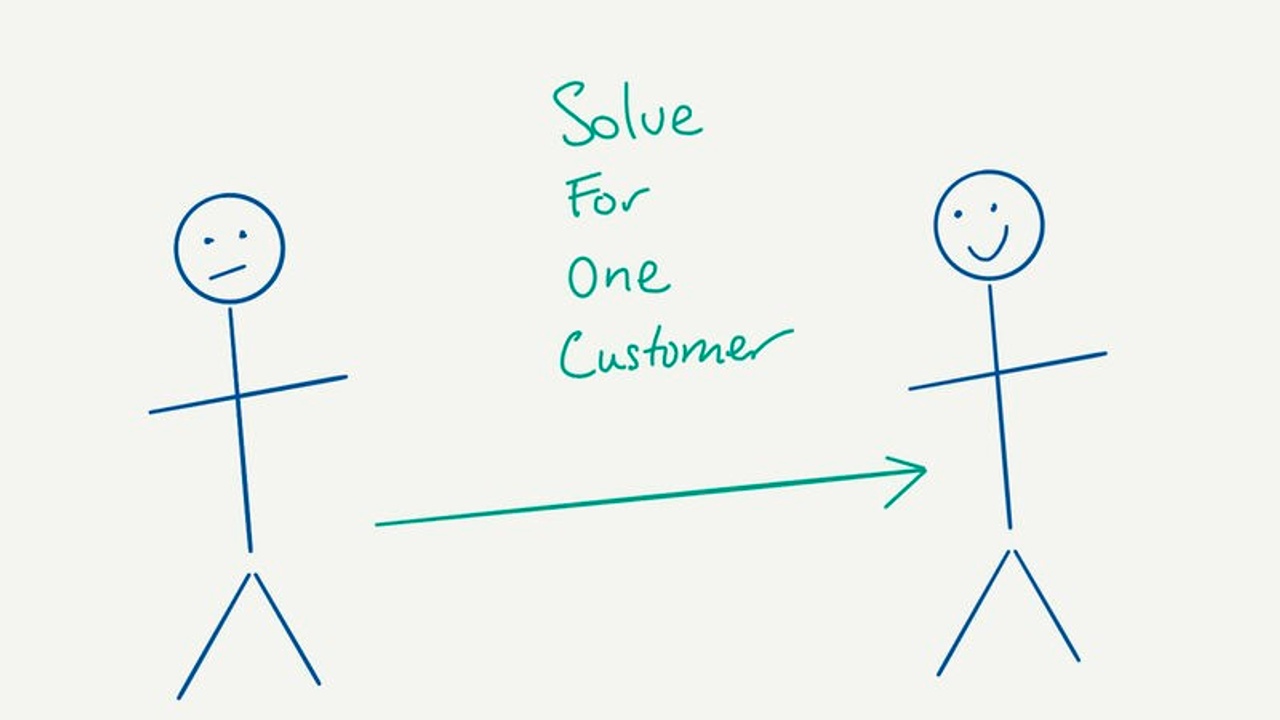What Not to Do With Your Website Messaging

Your homepage and website are not a self-promotional tool to talk about how great you and your company are.
Your customers and prospects encounter your website on a journey of trying to resolve a particular pain point.
Do not waste that opportunity by talking about:
-Awards you've won
-Companies you've acquired
-New branding you just launched
None of these things focus on what's really important: helping the customer achieve a stated or unstated goal.
Do this instead:
1) Nail down your positioning and messaging, including who you help
2) Showcase the benefits of your solution and what transformation you help them achieve
3) Include success stories and proof points to highlight how others have found success in a similar position
Wasting the first 10 seconds you have with a prospect on anything else is wasting some of the most precious sales and marketing real estate available.
Are You Using Your Gold Mine of Closed Won and Lost Data?

There is a gold mine of information for Demand Gen inside Closed Won and Closed Lost data.
Closed Won:
-What are the verticals we are winning deals with?
-What are the average deal sizes with our different segments / markets / verticals?
-How long was the sales cycle and what touches were involved?
Closed Lost:
-Were we too expensive for the right type of customer or the wrong type of customer?
-Did they go with a competitor? Which one and why?
-Was the timing off or was our pitch not right for the stage they were at?
The answers to all of these questions need to be fed back into the demand gen engine to refine and improve programs so that better pipeline can be generated.
The key word there is: *better* pipeline.
Better pipeline closes more often and doesn't churn as quickly. It has lower acquisition costs and is more efficient.
It's also how Marketing helps the business grow faster.
Pipeline Targets vs. Marketing Budget
Asking for additional marketing budget to spend on new opportunity areas without understanding pipeline targets can lead to targets being at risk and likely not being hit.
Similarly, setting pipeline targets without fully understanding all the potential areas where marketing can scale pipeline can lead to revenue growth opportunities being missed.
Most companies lean one way or the other with these approaches and inevitably fall short.
You need to do both a bottom-up and top-down analysis to fully understand how to fund marketing efforts and to increase the odds of success for the organization.
What Creative Demand Generation Really Means

Companies often mistake Technical Paid Media work for Creative Demand Gen work. Here's the difference.
Technical paid media work focuses on platform knowledge. This includes things like:
-Knowing the technical ins and outs of a platform
-Being able to set up correct structure for campaigns
-Optimizing issues inside platforms
This is what most agencies / partners / internal resources focus on.
While this work has value, it is not the core of where demand is generated.
Creative Demand Gen instead focuses on:
-Audience pain points and frustrations
-Building compelling content and the right offers to attract the right audience
-Growing a community / building an audience following
-Creating a strategic and narrative position in the marketplace to differentiate from the competitors
This is the work that most marketers fail to do in a lot of markets, which presents a blue ocean opportunity for the marketers that choose to focus on it.
This is also the work that creates the most e...
Increasing marketing impact by stopping bad ROI activities

Marketers often complain about a lack of budget, yet the same marketers invest significant portions of their limited resources into things that don't work.
These include:
-Content Syndication
-Overpaying Gartner
-Press Releases
-Buying Lists
Instead, look at how much of your marketing budget is going into these kinds of activities that produce virtually no impact.
Sure, things like Content Syndication raise awareness on broad channels but in most companies the impact to revenue is little (with or even without attribution).
Instead:
- Create a strong point-of-view for your business, prospects, customers and market
- Produce phenomenal content to become the go-to resource for your customers and market to learn from.
- Increase distribution to your ideal customers through targeted efforts.
Same marketing budget, entirely different impact on revenue, profitability and enterprise value creation.
What CMOs Need to Understand About Financial Stewardship

As a marketing leader, you are a financial steward for the business. This means you have a fiduciary responsibility to invest your marketing dollars wisely.
This means dealing with your marketing budget should follow the same principles as when you deal with your own money.
Some obvious rules:
1) Don't spend money on things that are purely cost centers with no ROI.
2) Don't be too prudent or careful and miss opportunities to capture value.
3) Always actively think about where to invest your limited resources more effectively.
Too many marketing budgets burn cash / capital from founders or investors because it doesn't feel like your own money.
But it really is your own money. It's the capital at your disposal to grow the company and the team, and it is your mechanism to helping more customers the more efficient you are.
Treat it as such and operate this way. Your CFO and CEO will become your biggest fans and supporters.
The True Value of Revenue and Profitability

Understanding the true value of revenue and profit generated is the key to knowing how much to invest in Marketing.
If your LTV of a client is 10 years and you’re not cash strapped, being willing to increase your CAC payback period to 18-24 months can drastically increase your speed to acquire customers.
While financial stewardship is critical to scale, knowing when to step on the gas can lead to significant gains.
This is when Marketing can do things like:
-Building much more brand awareness at the top of the funnel
-Invest heavily in content to generate long-term returns
-Scale paid media to outbid the competition that has more stringent cash constraints
Similarly, realizing that generating EBITDA has a 15x (likely more) multiple on exit / fundraising round can change how you view Marketing investment.
Short-term thinking may view this as conserving EBITDA for higher valuations. Long-term thinking looks at long-term EBITDA creation.
If payback periods are expanded to 18-24 m...
Is Your Business Using Demand Gen in a Holistic Way?

A common misconception inside companies is that Demand Gen purely refers to one sub-domain of marketing (e.g. paid media or ABM).
Examples of mistakes inside these companies:
-Content and Demand Gen teams are separated inside marketing and operate almost independently
-Some activities get way more of the funding than others -- this is why some companies over-index on Events while spending nothing on Paid Media
-The team lacks skill sets to deliver on the other areas of demand gen (e.g. SEO or Customer Marketing or Product Marketing)
-The team is not revenue-driven and is constantly distracted by the organizations needs for other activities (e.g. Sales Enablement, Corporate Comms) that do anything but drive demand.
What this thinking misses is that Demand Generation is the overall outcome of all kinds of marketing activities coming together.
ABM alone is not Demand Gen.
Paid Media alone is not Demand Gen.
SEO alone is not Demand Gen.
Nurture Content alone is not Demand Gen
De...
3 Plays to Use Paid Social to Drive Awareness

It's not Paid vs. Content. It's Paid + Content.
Paid Media without content hits diminishing returns. Content without Paid caps out its distribution even after finding an audience.
Paid + Content finds infinite scale through increased distribution.
Examples of plays on paid social that companies should be running today:
1) Promoting an ungated educational piece of content to drive awareness / traffic from ICPs on paid social platforms.
2) Doing paid social "PR" where you promote new product releases, partnerships, capabilities the way you would use a wire service but instead use paid social as your distribution platform.
3) Nurture campaigns on paid social where prospects in MCL / MQL / SAL / SQL stages see content in the form of promoted content or ads on Facebook and LinkedIn instead of just email nurture programs.
These kinds of campaigns have poor ROI / CAC when looked at through the lens of traditional marketing metrics. But they're the new way to do marketing and inevitably...
Why It Makes Sense to Solve For One Customer

Focusing all company efforts around resolving the pain points of 1 customer drastically increases the odds of success.
This is why some of the biggest companies are often started by people trying to scratch their own itch (e.g. Basecamp).
An effort like this involves:
1) Product teams clearly defining the person all features and roadmap items need to solve for.
2) Service teams clearly identifying areas to support new and existing customers on their journey.
3) Sales teams clearly mapping out the ideal buying persona and targeting them with focused outreach.
4) Marketing teams clearly outlining the messaging, content and distribution required to reach that ideal persona.
Focusing on one specific person may seem like it has a huge opportunity cost. But the market size of solving a very specific problem for one specific person is almost always a lot larger than you think.
The exercise also opens up adjacencies that were previously invisible.



